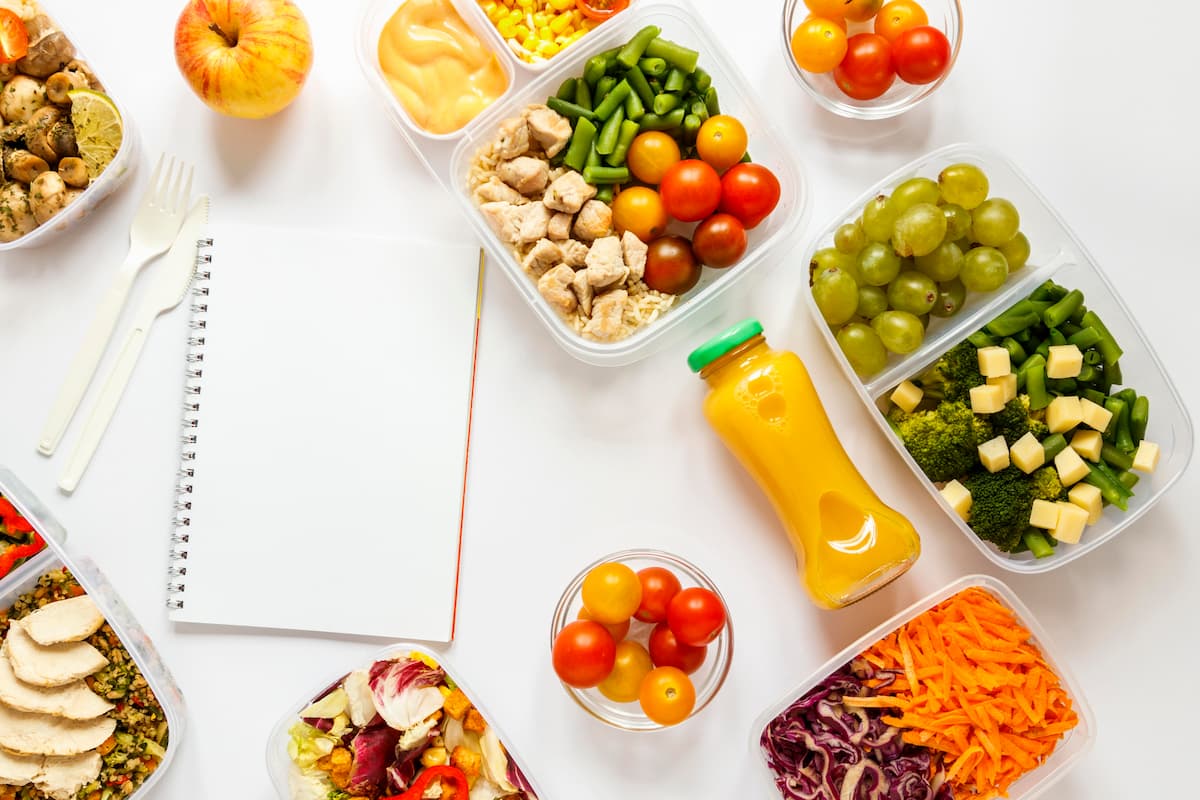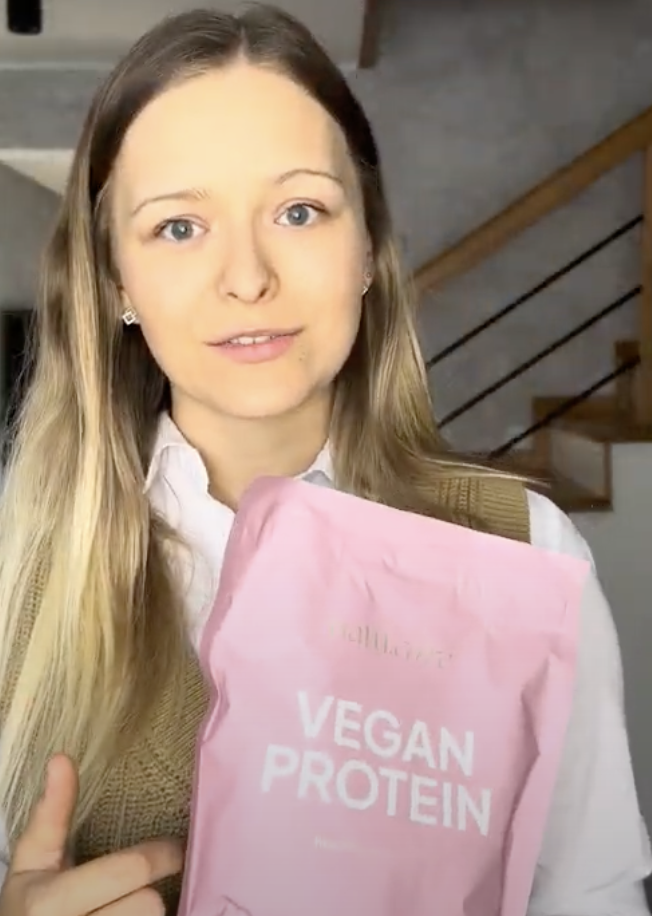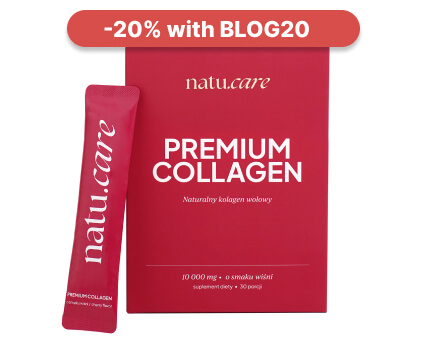The DASH diet: recipes, principles, products, for whom it is recommended
Learn about the principles of the DASH diet - one of the healthiest ways of eating in the world.


Learn more about our editorial process
.

Learn more about our editorial process
.

Learn more about our editorial process
.

Learn more about our editorial process
.
Why you can trust us
Articles on Natu.Care are written based on scientific research, data from government websites and other reliable sources. The texts are written in cooperation with doctors, nutritionists and other health and beauty experts. Articles are reviewed before publication and during significant updates.
.Learn more about our editorial process
.Information about advertisements
Content on Natu.Care may contain links to products from the sale of which we may receive a commission. When creating content, we adhere to high editorial standards and take care to be objective about the products discussed. The presence of affiliate links is not dictated by our partners, and we select the products we review ourselves completely independently.
.Learn more about our terms and Conditions
.It could be said that the DASH diet is a more relaxed sister of the Mediterranean diet. Although it has a bigger hopla on fats (even healthy ones).
In the diet family, the DASH sister will throw a chicken fillet on the barbecue rather than a pork neck, but she won't look at you crossly if you're tempted either. She'll even let you nibble on some cheesecake from time to time (let's not argue about sultanas right now), although she'll slip you a bowl of fruit every day.
.
From this article you will learn:
- Where the DASH diet came from and what it is all about.
- What you can eat on the DASH diet.
- What you can eat on the DASH diet.
- What you can eat on the DASH diet.
- Are there foods that are prohibited on it.
- Who can go on the DASH diet?
- Who can switch to the DASH diet. .
- How to compose meals according to it. .
- What experts think about this way of eating. .

Odkryj, co dla Twojego zdrowia i urody może zrobić Białko Wegańskie, biała czekolada - malina
Natu.Care Białko Wegańskie, biała czekolada - malina
Pyszne, wegańskie białko roślinne, biała czekolada i malina - pomoże uzupełnić Twoją dietę w wartościowe proteiny. To aż 26 g białka i tylko 136 kcal w porcji.
Sprawdź cenę
Dzięki białku od Natu.Care moja odporność się poprawiła a włosy wzmocniły. A smak białej czekolady z maliną - to świetnie połączenie!Gabriela
See also:
.
- Mediterranean diet
- Diet in diabetes
- Ketogenic diet
- SIRT diet
- Dabrowski's Diet
- Light-Digestion Diet
- Healthy breakfast recipes
What is the DASH diet?
.
The DASH diet is a research-based diet designed to lower blood pressure and prevent cardiovascular disease, cancer and metabolic conditions (including type 2 diabetes)and.
The acronym DASH comes from the English Dietary Approaches to Stop Hypertension, which can be translated as "dietary approaches to treat hypertension"and. This acronym was first used to name a large-scale scientific study conducted on the US population, and later the diet that was created based on its findingsand.
Where did the DASH diet come from?
.
Experts at the National Institutes of Health ( National Institutes of Health) in the United States set out to see if blood pressure could be lowered with changes in dietary habits alone. To this end, they conducted a study at four medical centres between 1994 and 1996and.
Participants in the study were people with hypertension or with blood pressure classified as high (a pre-hypertensive condition). They were divided into three groups:
.
- the first - the control, was to consume a typical American diet (the so-called Western diet), .
- the second - to include more vegetables and fruit, .
- the third group was to implement principles similar to the Mediterranean diet (reducing red meat, fats, processed foods and sweets and increasing the intake of vegetables, fruit, lean dairy, white meat and fish).
In order to exclude as many variables as possible that could have distorted the results, all participants had to consume the same amount of salt and were not allowed to take medications or dietary supplements.
The study was conducted in the same way.
The study showed, a reduction in blood pressure in both groups that modified their diet, but the results were much better in those following the dietary model, later called the DASH diet.
Among these participants, blood pressure decreased after just two weeks and remained at this level for as long as the patients followed this diet. Blood pressure measurements fell by an average of 6 mm Hg for systolic blood pressure and by about 3 mm Hg for diastolicand.
The participants' blood pressure measurements fell by an average of 6 mm Hg for systolic blood pressure and by about 3 mm Hg for diastolic blood pressure.
The DASH diet - health benefits
.
Why is correct blood pressure so important? Because it is a factor in cardiovascular function.
Hypertension significantly increases the risk of, among other things, and:
- atherosclerosis, .
- stroke, .
- myocardial infarction (heart attack), .
Cardiovascular diseases are the most common cause of death worldwide. They are immediately followed by cancerand. Research shows that the DASH diet not only lowers blood pressure, but can extend your life overalland.
Using the DASH diet canand:
.
- .
- reduce the risk of cardiovascular disease, .
- have an anti-cancer effect, .
- improve lipid and glucose metabolism, .
- prevent type 2 diabetes, .
Did you know that...
.Besides the Mediterranean diet, the DASH diet is considered the healthiest in the world. It is recommended by experts from all over the world, and in Poland by, among others, the Polish Society of Hypertension, the Polish Forum for the Prevention of Cardiovascular Diseases and the Polish Society of Diabetology.
. .
The DASH diet - for whom?
.
So... the DASH diet is for people with high blood pressure? No. Or rather: not only. The DASH diet is for everyone. If only health is important to you (and who isn't?) - apply the principles of this diet to reduce your risk of serious disease and live longer.
Although anyone can benefit from it, there are certain groups of people to whom the DASH diet is particularly recommendedand:
- seniors, .
- persons with high blood pressure or hypertension, .
- persons who are overweight or obese, .
- diabetics and those suffering from insulin resistance, .
- have high total cholesterol or 'bad' LDL cholesterol, .
- persons who smoke tobacco, .
- persons with a family history of a burden of cardiovascular disease, diabetes or cancer, .
Natu.Care Collagen Premium 5000 mg, mango & passion fruit

- Collagen content: 5000 mg marine collagen hydrolysate
- Additional active ingredients: vitamin C, low molecular weight hyaluronic acid (and L-theanine and coenzyme Q10 in cocoa flavoured collagen or vitamin A and vitamin E in mango–passion fruit flavoured collagen)
- Form: powder sachets
- Dose: 1 sachet per day
- Sufficient for: 30 days
Product description
Fish collagen from the Natu.Care brand in a dose of 5000 mg, based on certified ingredients of the best quality. Regular supplementation will positively influence the appearance of the skinóry, hairów and nails – they will be rebuilt and strengthened from the inside.
In addition to collagen, which is valuable for health and beauty, it also offers other active ingredients that help to maintain a youthful complexion, shiny hair and strong nails.
The formula contains a sufficient portion of the active ingredient to positively affect joints, the musculoskeletal system and immunity.
Natu.Care Premium Collagen is available in two flavours – Cacao Bloom and Rise&Shine. Both formulas are based on the following active ingredients: marine collagen hydrolysate, wild roseóbud extract and hyaluronic acid.
Additionally, Cacao Bloom contains natural L-theanine, coenzyme Q10 and defatted Dutch cacao. Rise&Shine instead contains vitamin E and vitamin A.
These are the best collagens in the world.
These best fish collagens on the market also rós taste – Cacao Bloom is a treat for chocolate lovers. Rise&Shine will appeal to those whoólike the refreshing taste of mangoófruit and passion fruit.
Pros and cons
Pros:
- Vitamin C supports the body's collagen production, enhancing its effectiveness.
- An effective dose of hyaluronic acid, which additionally supports skin hydration and joint health.
- Fish collagen absorbs 50% better. Additionally, the manufacturer specifies the fish species it is sourced from (Atlantic cod).
- The composition has been tested by the independent and accredited J.S. Hamilton laboratory.
- MSC (Marine Stewardship Council) quality certification, which confirms that the collagen source supports sustainable fishing practices.
Cons:
- None.
Additional information
Natu.Care's fish collagen receives praise for its delicious taste. You won't find the fishy aftertaste that often comes through in other collagens. Plus, you have two tasty flavors to choose from: cocoa and mango-passionfruit.
Active ingredients like coenzyme Q10, hyaluronic acid, and natural L-theanine provide anti-inflammatory and antioxidant benefits while slowing down aging processes.
User review
Super, after about 6 weeks of use, the skin on my face became noticeably firmer. Wonderful taste.
Ania ZalewskaNatu.Care customer
Natu.Care Premium collagen 10 000 mg, mango-maracuja

- Collagen content: 10,000 mg marine collagen hydrolysate
- Additional active ingredients: vitamin C, low molecular weight hyaluronic acid (and L-theanine and coenzyme Q10 in cocoa flavoured collagen or vitamin A and vitamin E in mango–passion fruit flavoured collagen)
- Form: powder sachets
- Dose: 1 sachet per day
- Sufficient for: 30 days
Product description
One of the strongest collagens on the market, whichós provides as much as 10,000 mg in a daily serving. This allows the formula to effectively support the condition of the skin, hair and nails.
With this supplement, you will support your beauty, which will allow you to visually stop the ageing process and feel a second youth!
Natu.Care Collagen Premium 10 000 mg comes in two flavours – cherry and mango-maracuja. Both formulas have the same product backbone – collagen, hyaluronic acid and vitamin C.
In the cherry version you additionally find glucosamine, chondroitin and Indian frankincense resin extract. Mango-maracuja, on the other hand, contains vitamin E and vitamin A.
Pros and cons
Pros:
- Tested collagen formula – SeaGarden, whose effects have been confirmed in clinical studies.
- Effective dose of hyaluronic acid, additionally moisturizing the skin and positively impacting joint health.
- Vitamin C supports the body’s natural collagen production.
- The composition has been tested by the independent and accredited J.S. Hamilton laboratory.
- The product has an MSC (Marine Stewardship Council) quality certification – the collagen source supports sustainable fishing practices.
Cons:
- None.
Additional information
Users praise Natu.Care Collagen Premium for the easy dissolvability of the powder.
User review
I noticed a significant improvement in my skin texture after a few weeks of taking collagen regularly. My complexion is now as soft as velvet!
Natu.Care Collagen Premium 10000 mg, cherry

- Collagen content: 10,000 mg of hydrolyzed bovine collagen
- Additional active ingredients: vitamin C, low molecular weight hyaluronic acid, glucosamine, chondroitin, extract of Indian frankincense resin (boswellia serrata)
- Form: powder sachets for drinking
- Serving: 1 sachet per day
- Lasts for: 30 days
Product description
One of the strongest collagens on the market, providing as much as 10,000 mg per daily serving. This product can effectively support the condition of joints, skin, hair, and nails.
With this supplement, you will support your skeletal and joint system as well as your beauty, helping you visually halt the aging process and feel rejuvenated!
Pros and cons
Pros:
- The daily portion of collagen is very large – as much as 10,000 mg.
- Proven collagen formula – COLLinstant, whose effectiveness has been confirmed in clinical studies.
- Effective dose of hyaluronic acid, which additionally moisturizes the skin and positively affects joint health.
- Vitamin C supports the body's natural collagen production.
- Glucosamine is a fundamental building block of compounds found in joint cartilage and a component of collagen that gives elasticity to connective tissue in tendons.
- Chondroitin is a natural component found in the human body, mainly in cartilage. This large molecule (mucopolysaccharide) has the ability to absorb water, which helps maintain the elasticity and resilience of cartilage.
- Frankincense resin extract supports blood circulation and joint mobility and reduces their stiffness. It may help alleviate inflammatory conditions.
- The composition has been tested by the independent and accredited J.S. Hamilton laboratory.
Cons:
- None.
Additional information
Users praise Natu.Care Collagen Premium for the easy dissolving of the powder.
Premium Sodium Butyrate
Product description
Premium Sodium Butyrate is a natural support for your digestive system. With a high dose of butyric acid (940 mg), it supports the regeneration of the intestinal mucosa, improving gut health and function, and aids in the absorption of nutrients. By taking care of your intestines, you're taking care of the health of your entire body.
Studies involving people suffering from irritable bowel syndrome confirm that sodium butyrate is ideal for supporting issues related to bacterial flora imbalances (for example, after antibiotic therapy), constipation and diarrhea, inflammation of the intestinal mucosa, or a diet low in fiber.
Premium Sodium Butyrate capsules are made using the innovative DRcaps® technology. This guarantees that the active ingredients in the product are protected from the destructive effects of stomach acids and digestive enzymes. As a result, we can be sure that the beneficial ingredients are released in the small intestine and are fully absorbed by our body.
Premium Sodium Butyrate from Natu Care is 100% tested, and its composition contains only the highest quality raw materials.
Pros and cons
Pros:
- Supports digestive system function
- Helpful for various gastrointestinal conditions, including IBS
- High dose of butyric acid in each capsule
- Eco-friendly, clean, and tested composition
- Free from added sugar, gluten, GMOs, and lactose
- Innovative capsule technology - DRcaps
Cons:
- None
Additional Information
Take 3 capsules daily at any time of the day, preferably with a meal. Swallow the capsules whole with water.
Premium Sodium Butyrate is intended for adults.
The product should be used under medical supervision.
User review
I've been using the product for 2 weeks. My stomach feels lighter, and my digestion has improved. I recommend it.
Natu.Care Premium Magnesium + Vitamin B6

- Magnesium content per day: 305 mg
- Additional active ingredients: Vitamin B6 (2.1 mg)
- Form: capsules
- Serving size: 3 capsules per day
- Sufficient for: 30 days
Product description
The Premium Magnesium + Vitamin B6 dietary supplement is a comprehensive product that combines three organic forms of magnesium (citrate, malate, and diglycinate) and vitamin B6 in highly absorbable forms.
Magnesium is an essential mineral without which our bodies cannot function properly. It supports the immune, nervous, and muscular systems, maintains electrolyte balance, and is involved in cell division and the regulation of mental functions.
Research shows that magnesium supplementation is even more effective when accompanied by vitamin B6, which is included in our product. Vitamin B6 is responsible for the proper functioning of the nervous and immune systems, as well as the proper functioning of the heart.
If you want to safely get rid of feelings of fatigue, concentration problems, hair loss, muscle cramps, trembling, or irritability, reach for Premium Magnesium from Natu.Care, tested by the independent, certified laboratory J.S. Hamilton Poland.
Pros and cons
Pros
- Supports the proper functioning of the nervous and immune systems.
- Reduces feelings of fatigue and tiredness.
- Maintains proper psychological functions.
- The purity of the ingredients (free from anti-caking agents, artificial fillers, and additives such as titanium dioxide, microcrystalline cellulose, talc, magnesium stearate, and silicon dioxide) has been confirmed by laboratory tests.
- High absorption of ingredients.
- Soft capsules that are easy to swallow.
- Suitable for vegetarians and vegans.
Cons
- None.
Additional information
Take with a meal, 3 capsules per day.
The capsules should be taken with at least 250 ml of water.
If you have trouble sleeping, it is advisable to take 1 capsule in the morning and 2 capsules in the evening, no later than 4 hours before bedtime.
Avoid combining with products high in calcium (milk, yogurt, cheese), as this may negatively affect magnesium absorption.
Pregnant and breastfeeding women should consult a doctor before starting supplementation.
User review
I’m very impressed with the speed of delivery. The product itself is of high quality and absorbs well. After two weeks of supplementation, I’ve noticed a significant improvement in muscle recovery, especially during periods of intense training. I highly recommend it!
Product description
The dietary supplement contains omega-3ᵀᴳ, or omega-3 acids in the form of trójglyceridesów. Scientific studies suggest that this form of fatty acidsós up to 2 times better absorbed than the estersós present in many dietary supplements on the market. This means that you are assured of their effectiveness and of supplying yourself with valuable omega acids.
Fatty acids omega-3 are derived from wild anchovy oil. It is a rich source of healthy fats that are essential for the health of the cardiovascular, immune and nervous systems, as well as the proper function of vision, joints muscles.
Scientific research suggests that wild anchovies are a good source of healthy fats.
Scientific research also suggests that an adequate intake of omega-3 fatty acidsós protects against and supports the treatment of depression and anxiety disorders. In addition, omega-3s influence the hydration and appearance of the skinóry and support healthy sleep.
.
The formula contains a total of 750 mg of EPA+DHA acidsós, which is three times higher than the recommended minimum of 250 mg for the Polish population. Omega-3 TG Premium has studies indicating that its TOTOX is 9, which is a very good result.
Supplementation of omega-3 fatty acidsóis recommended for anyone who does not eat 1–2 portions (approximately 300 g) of oily fish per week. Children during growth, seniors, physically active people, vegans and vegetarians, as well as patients undergoing cardiovascular treatment and prevention of heart disease also have an increased need.
Pros and cons
The dietary supplement contains omega-3ᵀᴳ, or omega-3 acids in the form of trójglyceridesów. Scientific studies suggest that this form of fatty acidsós up to 2 times better absorbed than the estersós present in many dietary supplements on the market. This means that you are assured of their effectiveness and of supplying yourself with valuable omega acids.
Fatty acids omega-3 are derived from wild anchovy oil. It is a rich source of healthy fats that are essential for the health of the cardiovascular, immune and nervous systems, as well as the proper function of vision, joints muscles.
Scientific research suggests that wild anchovies are a good source of healthy fats.
Scientific research also suggests that an adequate intake of omega-3 fatty acidsós protects against and supports the treatment of depression and anxiety disorders. In addition, omega-3s influence the hydration and appearance of the skinóry and support healthy sleep.
.
The formula contains a total of 750 mg of EPA+DHA acidsós, which is three times higher than the recommended minimum of 250 mg for the Polish population. Omega-3 TG Premium has studies indicating that its TOTOX is 9, which is a very good result.
Supplementation of omega-3 fatty acidsóis recommended for anyone who does not eat 1–2 portions (approximately 300 g) of oily fish per week. Children during growth, seniors, physically active people, vegans and vegetarians, as well as patients undergoing cardiovascular treatment and prevention of heart disease also have an increased need.
Additional information
The dietary supplement contains omega-3ᵀᴳ, or omega-3 acids in the form of trójglyceridesów. Scientific studies suggest that this form of fatty acidsós up to 2 times better absorbed than the estersós present in many dietary supplements on the market. This means that you are assured of their effectiveness and of supplying yourself with valuable omega acids.
Fatty acids omega-3 are derived from wild anchovy oil. It is a rich source of healthy fats that are essential for the health of the cardiovascular, immune and nervous systems, as well as the proper function of vision, joints muscles.
Scientific research suggests that wild anchovies are a good source of healthy fats.
Scientific research also suggests that an adequate intake of omega-3 fatty acidsós protects against and supports the treatment of depression and anxiety disorders. In addition, omega-3s influence the hydration and appearance of the skinóry and support healthy sleep.
.
The formula contains a total of 750 mg of EPA+DHA acidsós, which is three times higher than the recommended minimum of 250 mg for the Polish population. Omega-3 TG Premium has studies indicating that its TOTOX is 9, which is a very good result.
Supplementation of omega-3 fatty acidsóis recommended for anyone who does not eat 1–2 portions (approximately 300 g) of oily fish per week. Children during growth, seniors, physically active people, vegans and vegetarians, as well as patients undergoing cardiovascular treatment and prevention of heart disease also have an increased need.
Expert opinion
The dietary supplement contains omega-3ᵀᴳ, or omega-3 acids in the form of trójglyceridesów. Scientific studies suggest that this form of fatty acidsós up to 2 times better absorbed than the estersós present in many dietary supplements on the market. This means that you are assured of their effectiveness and of supplying yourself with valuable omega acids.
Fatty acids omega-3 are derived from wild anchovy oil. It is a rich source of healthy fats that are essential for the health of the cardiovascular, immune and nervous systems, as well as the proper function of vision, joints muscles.
Scientific research suggests that wild anchovies are a good source of healthy fats.
Scientific research also suggests that an adequate intake of omega-3 fatty acidsós protects against and supports the treatment of depression and anxiety disorders. In addition, omega-3s influence the hydration and appearance of the skinóry and support healthy sleep.
.
The formula contains a total of 750 mg of EPA+DHA acidsós, which is three times higher than the recommended minimum of 250 mg for the Polish population. Omega-3 TG Premium has studies indicating that its TOTOX is 9, which is a very good result.
Supplementation of omega-3 fatty acidsóis recommended for anyone who does not eat 1–2 portions (approximately 300 g) of oily fish per week. Children during growth, seniors, physically active people, vegans and vegetarians, as well as patients undergoing cardiovascular treatment and prevention of heart disease also have an increased need.
Natu.Care Vitamin D 2000 UI
Product description
Vitamin D plays a crucial role in our health and well-being. It affects calcium and phosphate metabolism, which translates to healthy bones and teeth. It also helps regulate the immune system, and studies indicate its influence on the functioning of the nervous system.
Vitamin D, although called a “vitamin,” is actually a prohormone that our body produces on its own, primarily under the influence of sunlight. Unfortunately, our modern lifestyle contributes to deficiencies of this essential vitamin. Working in enclosed office buildings, using (necessary!) SPF creams, and covering the body with clothing all make it very difficult, if not impossible, to obtain adequate levels of vitamin D from sunlight. This is why appropriate, year-round supplementation is so crucial.
Vitamin D from Natu.Care is a well-tested vitamin D3 suspended in safflower oil, a plant known for its numerous health benefits. The convenient, easy-to-swallow capsule will make supplementation a part of your daily, healthy routine, improving your overall well-being.
Pros and cons
Pros:
- Ensures proper functioning of the immune system
- Supports the maintenance of healthy bones and teeth
- Maintains proper heart, kidney, and muscle function
- Tested by an independent, certified laboratory
- Convenient and easy-to-swallow capsule
- Clean composition - free from added sugar, gluten, GMOs, lactose, and without preservatives or colorants
Cons:
- None.
Additional Information
Pregnant women and breastfeeding mothers should consult a doctor before using the product. This dietary supplement is intended for a healthy adult population up to the age of 75.
Collagen Booster - Glow Stories

- Active ingredients: bamboo shoot extract, Quatrefolic®, L-Methionine, L-cysteine, vitamin E, vitamin A, niacin (vitamin B3), vitamin B6, vitamin B2 (riboflavin), biotin, zinc, copper
- .
- Form: capsules
- .
- Dose: 1 capsule per day
- .
- Sufficient for: 60 days
- .
Product description
A dietary supplement containing vitamins, minerals and plant extracts thatósupport the skinóhand, hair and nails. The product is especially distinguished by the form of folate – it is Quatrefolic, whichós absorbed very well and is natural.
In addition to valuable vitamins and minerals, such as vitamin A, E, B3, B2 and biotin, the formula contains bamboo shoot extract, whichóry further enhances your beauty.
Pros and cons
A dietary supplement containing vitamins, minerals and plant extracts thatósupport the skinóhand, hair and nails. The product is especially distinguished by the form of folate – it is Quatrefolic, whichós absorbed very well and is natural.
In addition to valuable vitamins and minerals, such as vitamin A, E, B3, B2 and biotin, the formula contains bamboo shoot extract, whichóry further enhances your beauty.
Additional information
A dietary supplement containing vitamins, minerals and plant extracts thatósupport the skinóhand, hair and nails. The product is especially distinguished by the form of folate – it is Quatrefolic, whichós absorbed very well and is natural.
In addition to valuable vitamins and minerals, such as vitamin A, E, B3, B2 and biotin, the formula contains bamboo shoot extract, whichóry further enhances your beauty.
Principles of the DASH diet
.
Despite appearances, eating in the DASH spirit is quite simple. If you don't care about weight loss and don't have additional health requirements, you don't need to carry out complicated calculations.
10 simple rules for the DASH diet:
- Fat can make up a maximum of 27% of kilocalorie intake and ideally should come from plant sources.
- Low-fat dietary intake.
- Low-fat dairy, nuts and seeds are excellent snacks - consume them every day.
- Low-fat dairy, nuts and seeds are excellent snacks - consume them every day.
- Each of your main meals should be based on vegetables and fruit, but it is the former that you eat the most. .
- When choosing cereal products, go mainly for those made from whole grains or multigrains.
- Main sources of nutrition.
- The main sources of protein on the DASH diet are low-fat dairy, white meat and fish. .
- For at least one day a week, refrain from eating meat. .
- Instead of salt, use other spices: herbs, garlic, lemon juice, etc. The daily amount of salt consumed should not exceed ⅔ teaspoon - including that contained in prepared foods. By eating a large packet of crisps, your daily norm is done... .
- While we're on the subject of crisps, as you can easily guess any salty snacks are not advisable and should be limited to occasional consumption. .
- The DASH diet does, however, allow for small pleasures and assumes that you can eat up to 5 portions of sweets per week (if you don't suffer from diabetes, of course). "A portion of sweets" is, for example, ice on a stick (rather than a whole tin of cake).
- Eat a variety of foods.
- Eat varied and regular meals - ideally three main meals and two smaller meals (second breakfast and afternoon tea).
Don't be afraid of fruit! There is a current viciousness against all types of sugar. The sugar found in fruit is lumped together with glucose-fructose syrup, processed cane sugar or sucrose. Meanwhile, the sugar in fruit is not to blame for our health problems. Fruit is pure minerals, vitamins, protein, water, fibre, antioxidants, pectin and fructose..

Nina KrólManager of Content Promotion and Nutritionist at Natu.Care
Recommended products
.
Do you know what the most beautiful thing about the DASH diet is? That there is no list of foods you must consume. You don't have to base your diet on red or green vegetables or eat these 10 super foods that will change your life. Of course, vegetables and fruit should be the basis of your diet, but you can reach for the ones you like best.
Or try new, exotic plants and test unusual flavour combinations. Vegetables can be eaten raw as well as cooked - in the form of sauces, pastes, soups or roasted bites, they will be much easier for your stomach to digest.
For more information, please see our website.
When it comes to sources of protein, go for poultry, rabbit, other types of lean meat, fish and seafood. Do you like eggs? Good - you can even eat them every day.
Another group of products that are recommended is low (or reduced) fat dairy. By eating it, you will provide yourself with an extra source of protein and calcium.
The following products are recommended.
Although the DASH diet assumes a limited intake of fat - don't forget about it. It is where some nutrients dissolve (e.g. ADEK vitamins). Experts recommend mainly fats of vegetable origin - olive oil, rapeseed oil and margarine.
.
What to avoid?
.
There are no forbidden products on the DASH diet. From time to time, you may reach for sweets or processed meat - in keeping with the principle that everything is for humans, but in moderation. However, there are certain groups of products that are good to eat in smaller quantities.
.
On the DASH diet, limitand:
- .
- salty snacks (crisps, sticks, sprinkled nuts, salted pistachios), .
- sweets (reach for them a maximum of 5 times a week), .
- red meat (especially fatty pork and beef), .
- highly processed foods (also a source of the sodium you want to reduce), .
- zoon fats (butter, lard, fatty skins).
The DASH diet simply assumes as few processed foods as possible, hence try to limit..
 .
.
Marta Kaczorekclinical nutritionist and personal trainer
.
DASH diet nutrition pyramid
.
Most people are visualists, so the tenets of the DASH diet are easiest to understand by looking at their graphical representation. Here is the food pyramid for the DASH dietand:

Does the DASH diet have disadvantages?
.
Certainly - if you're a big lover of butter, veggies and cheese fondue, and have fat running through your veins instead of blood. Then by starting the DASH diet you may have a big sense of loss.
However, in the context of the scientifically proven benefits of the DASH diet, it has a really non-restrictive premise, so implementing it for most people, will involve little change in diet.
Remember also that if you are a healthy person and don't have any special dietary requirements, every positive change counts, even if you don't follow all the DASH guidelines every day or week.
The DASH diet may have inconveniences for certain people - for example, those who like seasoned food, because they need to limit salt (which, among other things, is in the soy sauce often used in cooking)..
 .
.
Marta Kaczorek clinical nutritionist and personal trainer
.
The DASH diet - recipes
.
Most of the following recipes have been prepared for you by dietitian Marta Kaczorek. You can also find many suggestions for free menus (created by NFZ dieticians) at diety.nfz.gov.pl.
Breakfast in the spirit of DASH
.
Winter quinoa
.
A serving contains: 535 kcal, 14.26 g protein, 62 g fat, 100.21 g carbohydrate
Ingredients:
- Walnuts - 1/3 handful (10 g) .
- Banana - 1 piece (120 g) .
- Granate, raw - 1/2 piece (50 g) .
- Natural yogurt, 2% fat - 7 and 1/2 tablespoons (150 g) .
- Xylitol - 1 teaspoon (7 g) .
- Marshmallow flakes - 5 tbsp (50 g) .
- Cinnamon, ground - 3/4 teaspoon (3 g) .
Method of preparation:
- Pour boiling water over the millet flakes just above their level. Wait a few minutes for them to swell.
- Prepare.
- Add the yoghurt, xylitol, cinnamon and pomegranate seeds - mix well. .
- Dice the banana and layer on top and sprinkle the whole thing with chopped nuts. .
DASH diet - dinner recipe
.
Rice casserole with coconut milk
.
A serving contains: 573 kcal, 33.16 g protein, 19.27 g fat, 73.14 g carbohydrate
Ingredients:
- Chicken breast meat, skinless - 1/2 piece (100 g) .
- Onion - 1/4 piece (25 g) .
- Clove of garlic - 1 clove (5 g) .
- Cauliflower - 1 portion (200 g) .
- Corn flour - 1/2 tsp (5 g) .
- Coconut milk - 10 tbsp (100 ml) .
- Olive oil - 1/2 tbsp (5 ml) .
- Curry, powdered - 2 teaspoons (6 g) .
- Ginger, ground - 1/3 teaspoon (1 g) .
- Pepper, powder - 1/2 teaspoon (2 g) .
- Black pepper - 1 pinch (1 g) .
- Brown rice - 1/3 cup (60 g) .
Method of preparation:
- Cook the cauliflower and rice, .
- Dice the chicken and sprinkle with curry powder, then braise in a pan with olive oil and chopped onions.
- Cook the chicken in a pan with olive oil and chopped onions.
- Pour the coconut milk into a pot, add the paprika, ginger, chopped garlic and pepper and bring to the boil. .
- Then add the corn flour dissolved in half a cup of water and bring to the boil again. .
- In an ovenproof dish, arrange the rice and cauliflower, pour the whole thing over the milk mixed with the flour.
- Bake at 180°C.
- Bake at 180 degrees for 25 minutes. .
DASH dinner
.
Pasta with basil pesto
.
A serving contains: 410 kcal, 11.19 g of body, 20.2 g of fats, 46.99 g of carbohydrates)
Ingredients:
- Basil, fresh - 10 handfuls (30 g) .
- Whole grain pasta - 2/3 cup (50 g) .
- Olive oil - 1 tbsp (10 ml) .
- Cashew nuts - 2/3 handful (20 g) .
- Cocktail tomato - 8 pieces (160 g) .
- Black pepper - 1 pinch (1 g) .
Method of preparation:
- Cook the pasta according to the recipe on the packet.
- Cook the pasta according to the recipe on the packet.
- Roast the cashew nuts in a dry frying pan.
- Toss in the blender.
- Throw into a blender along with the basil, pepper and oil - blend. .
- Pour this prepared pesto over the pasta. Serve with cherry tomatoes. .
DASH-compatible snacks
.
The DASH diet can be really simple. As a second breakfast or afternoon snack, for example, you can eat:
- a handful of nuts, .
- banana, .
- an apple, .
- fruit salad, .
- smoothie, .
- carrot and celery sliders with hummus, .
- natural yoghurt or kefir (can be with added fruit or a teaspoon of honey), .
- popcorn (without salt or butter), .
If, however, you like to cook and want to play around with preparing something a little fancier, for example for dessert or a second breakfast, please do:
Vegetables with dip
.
A serving contains: 167 kcal, 16.37 g protein, 2.38 g fat, 23.48 g carbohydrate
Ingredients:
- Chives - 2 tbsp (10 g) .
- Natural yoghurt, 2% fat - 2 and 1/2 tbsp (50 g) .
- Carrot - 1 piece (45 g) .
- Cucumber - 1/2 piece (90 g) .
- Red peppers - 1/2 piece (115 g) .
- Dill, dried - 1/2 teaspoon (2 g) .
- Black pepper - 1 pinch (1 g) .
- Parsley, dried - 2/3 teaspoon (2 g) .
- Radish - 2 pieces (30 g) .
- Cottage cheese, lean - 1 and 2/3 slices (50 g) .
Method of preparation:
- Shred the cottage cheese with a fork, mix with the grated radish and yoghurt, season with pepper, dill and parsley.
- Toss the cottage cheese with the cottage cheese.
- Stir everything in with the chopped chives. .
- Peel the vegetables and cut into posts. .
Spinach and blueberry cocktail
.
A serving contains: 178 kcal, 4.24 g protein, 3.87 g fat, 34.52 g carbohydrate
Ingredients:
- Sesame, seeds - 1 teaspoon (5 g) .
- Blueberries, frozen - 1/6 packet (50 g) .
- Apples - 3/4 piece (160 g) .
- Spinach - 2 handfuls (50 g) .
- Goji berries, dried - 2 teaspoons (8 g) .
Method of preparation:
- Into a blender, put the spinach, blueberries, apple, add the sesame, goji berries and water (about 300 ml).
- Toss the spinach, blueberries, apple, add the sesame, goji berries and water (about 300 ml).
- Blend the whole thing. .
Bruschetta
.
Ingredients:
- raspberry tomato .
- 2-3 slices of whole wheat baguette .
- spring onion .
- Olive oil .
- clove of garlic .
- a few leaves of fresh basil .
Method of preparation:
- Squeeze a clove of garlic through a press and rub it on the bread. Drizzle them with olive oil and roast them in the oven set to grill for about 5 minutes.
- Take a few minutes to grill.
- In the meantime, scald the tomato, peel off the skin and cut into small cubes. Drain off any excess juice (or remove the seeds completely).
- Drain the tomatoes.
- Smoke and basil are also finely chopped and mixed with the tomatoes. .
- When the croutons have browned, remove them from the oven and top them with the tomatoes and toppings. .
Ricotta pancakes
.
Ingredients:
- glass of whole wheat flour .
- a cup of 1.5% milk
- a cup of milk
- an egg
- ¾ cup sparkling water .
- a pinch of salt .
- 300 g of any fruit (strawberries, blueberries, raspberries) .
- 2 tbsp honey or sweetener .
- juice of 1/4 lemon or orange .
- ½ the zest grated from a lemon or orange .
- a packet of reduced-fat ricotta cheese .
- canola oil for frying .
Method of preparation:
- In a bowl, place the ingredients for the pancake batter: flour, milk, egg, water and a pinch of salt. Blend to a smooth paste without lumps. Spread a drop of oil in the pan with a silicone brush and fry the pancakes. .
- If you are using larger fruit (e.g. strawberries) cut them into smaller pieces. You can also blitz them into a sauce. .
- Mix the ricotta with lemon or orange juice and the zest grated from one of these fruits. Add two tablespoons of honey and the fruit (if you blanched it for the sauce do not add it to the filling, but pour it over the top of the pancakes). .
- Stuff the pancakes with the cheese and fruit filling and roll into rolls or fold into triangles. .
Omlet with tomato and avocado
.
Ingredients:
- an egg
- ½ a small avocado
- ½ of a small tomato
- Salt and pepper to taste .
Method of preparation:
- Dice the tomato and drain off any excess juice. Peel and slice the avocado.
- Peel the avocado and slice it.
- Beat the egg with a fork until fluffy. Season with salt and pepper. Pour into a heated frying pan greased with a little rapeseed oil.
- Fry briefly.
- Fry briefly, making sure to distribute the still-unscrambled egg around the pan. When the omelette is fried, place the tomato and avocado slices on top of half of it. Using a spatula, fold the omelette in half so that the fruit (yes, it's fruit) is in the middle.
See also:
Summary
.
- The DASH diet is a way of eating directed at lowering blood pressure and preventing cardiovascular disease and other serious, civilisation-related conditions.
- The DASH diet is a way of eating directed at lowering blood pressure and preventing cardiovascular disease and other serious, civilisation-related conditions.
- The DASH diet was developed based on the results of a scientific study conducted on patients at four medical centres in the US.
- The DASH diet is a dietary model aimed at lowering blood pressure and preventing cardiovascular disease.
- The dietary model involves reducing the amount of fats consumed, especially those of animal origin. The diet is dominated by vegetables, fruit and dairy products, as well as lean meat and fish.
- DASH is based on the following principles.
- DASH is based also on reducing the intake of salt and products high in sodium.
- Alongside the Mediterranean diet, the DASH diet is considered by experts to be the healthiest way of eating. It is recommended by many medical associations. .
FAQ
.Can eggs be eaten on the DASH diet
.Yes, eggs can be eaten on the DASH diet - even daily. According to the WHO ( World Health Organization), it is considered safe for health to consume up to 2 eggs per day. Eggs are a source of complete protein and other nutrients such as ADEK vitamins, vitamin B12, folic acid, zinc or potassium.
How much weight can you lose on the DASH diet?
.The correct weight loss on the diet is between 0.5 and 1 kg per week. This depends on the individual's calorie deficit, physical activity and metabolism. DASH focuses on healthy foods such as fruit, vegetables, lean sources of protein and whole grains.
Decrease calories gradually to avoid the yo-yo effect. Do sport regularly, which will help speed up the weight loss process. Consult a dietitian to tailor the diet to your needs.
Consult with a dietitian.
The DASH diet not only helps you lose weight, but also lowers blood pressure and improves overall health.
Is there a book with DASH diet recipes?
.Yes, there are many DASH diet recipe books. One of the best known is 'The DASH Diet Action Plan' (Polish translation: 'DASH Diet - Action Plan') by Marla Heller. It provides practical tips on how to follow the DASH diet, as well as recipes.
The DASH diet is recommended by the American Heart Association, the National Heart, Lung, and Blood Institute, as well as the Polish Society of Hypertension and the Polish Diabetological Society, among others. Follow this diet to lower your blood pressure and improve your overall health.
What is DASH?
.The acronym DASH stands for Dietary Approaches to Stop Hypertension, a way of treating high blood pressure with a diet. The DASH diet is a way of eating based on the principles of the Mediterranean diet - with some modifications.
.It involves limiting fat intake to 27% of daily energy requirements, reducing consumption of cholesterol- and sodium-rich foods, and increasing the eating of vegetables, fruit and whole grain cereals.
What is the difference between the DASH diet and the Mediterranean diet?
.The most important difference between the DASH diet and the Mediterranean diet is the restriction of fat intake in the former. Although both dietary models recommend eating mainly fats of plant origin (e.g. olive oil), in the Mediterranean diet they can be used without restriction. On the DASH diet, on the other hand, fats should not exceed 27% of the body's daily energy requirements.
In addition to this, the DASH diet is also a dietary supplement.
Also, the DASH diet is slightly less restrictive - it allows you to eat more dairy products and meat (although it should still be lean meat).
Details
Who should follow the DASH diet?
.The DASH diet should be followed by anyone who wants to ensure proper cardiovascular function and overall health. It is particularly recommended for people with hypertension, metabolic syndromes and cardiovascular conditions, as well as the obese and overweight. It is also an ideal diet for seniors.
Can children be on the DASH diet?
.Yes, children can eat according to the DASH guidelines. The DASH diet is a healthy and balanced way of eating that also allows for small pleasures. It can therefore be said to be not a diet in the sense of a programme focused on weight loss, but rather a nutritional model recommended by professionals.
The DASH diet teaches good eating habits, does not eliminate any foods and provides all the necessary vitamins and minerals. Building healthy habits in terms of meal composition is of great importance for future health and it is worth starting from an early age.
.
Resources
.See all
.Appel, L. J., Moore, T. J., Obarzanek, E., Vollmer, W. M., Svetkey, L. P., Sacks, F. M., Bray, G. A., Vogt, T. M., Cutler, J. A., Windhauser, M. M., Lin, P.-H., Karanja, N., Simons-Morton, D., McCullough, M., Swain, J., Steele, P., Evans, M. A., Miller, E. R., & Harsha, D. W. (1997). A Clinical Trial of the Effects of Dietary Patterns on Blood Pressure. New England Journal of Medicine, 336(16), 1117-1124. https://doi.org/10.1056/NEJM199704173361601
Avenue, 677 Huntington, Boston, & Ma 02115. (2018, January 16). Diet Review: DASH. The Nutrition Source. https://www.hsph.harvard.edu/nutritionsource/healthy-weight/diet-reviews/dash-diet/
Cena, H., & Calder, P. C.. (2020). Defining a Healthy Diet: Evidence for the Role of Contemporary Dietary Patterns in Health and Disease. Nutrients, 12(2), Article 2. https://doi.org/10.3390/nu12020334
Challa, H. J., Ameer, M. A., & Uppaluri, K. R. (2023). DASH Diet To Stop Hypertension. In StatPearls. StatPearls Publishing. http://www.ncbi.nlm.nih.gov/books/NBK482514/
Cichocka, M.Sc. A. (2018, February 20). The DASH diet - a star among diets. National Center for Nutrition Education. https://ncez.pzh.gov.pl/abc-zywienia/dieta-dash-gwiazda-wsrod-diet/
DASH Eating Plan: An Eating Pattern for Diabetes Management | Diabetes Spectrum | American Diabetes Association. (n.d.). Retrieved December 22, 2023, from https://diabetesjournals.org/spectrum/article/30/2/76/32278/DASH-Eating-Plan-An-Eating-Pattern-for-Diabetes
Figure 1 -Food Pyramid of the DASH Diet. Elaborated according to the... (n.d.). ResearchGate. Retrieved 22 December 2023, from https://www.researchgate.net/figure/Food-Pyramid-of-the-DASH-Diet-Elaborated-according-to-the-study-by-Appel-et-al-29_fig1_357408665
Filippou, C. D., Tsioufis, C. P., Thomopoulos, C. G., Mihas, C. C., Dimitriadis, K. S., Sotiropoulou, L. I., Chrysochoou, C. A., Nihoyannopoulos, P. I., & Tousoulis, D. M. (2020). Dietary Approaches to Stop Hypertension (DASH) Diet and Blood Pressure Reduction in Adults with and without Hypertension: A Systematic Review and Meta-Analysis of Randomized Controlled Trials. Advances in Nutrition, 11(5), 1150-1160. https://doi.org/10.1093/advances/nmaa041
Guo, R., Li, N., Yang, R., Liao, X.-Y., Zhang, Y., Zhu, B.-F., Zhao, Q., Chen, L., Zhang, Y.-G., & Lei, Y. (2021). Effects of the Modified DASH Diet on Adults With Elevated Blood Pressure or Hypertension: A Systematic Review and Meta-Analysis. Frontiers in Nutrition, 8. https://www.frontiersin.org/articles/10.3389/fnut.2021.725020
Moore, T. J., Conlin, P. R., Ard, J., Svetkey, L. P., & null, null. (2001). DASH (Dietary Approaches to Stop Hypertension) Diet Is Effective Treatment for Stage 1 Isolated Systolic Hypertension. Hypertension, 38(2), 155-158. https://doi.org/10.1161/01.HYP.38.2.155
.Onwuzo, C., Olukorode, J. O., Omokore, O. A., Odunaike, O. S., Omiko, R., Osaghae, O. W., Sange, W., Orimoloye, D. A., Kristilere, H. O., Addeh, E., Onwuzo, S., Omoragbon, L., Onwuzo, C. N., Olukorode, J., Omokore, O., Odunaike, O. S., Omiko, R., Osaghae, O. W., Sange, W., ... Omoragbon, L. (2023). DASH Diet: A Review of Its Scientifically Proven Hypertension Reduction and Health Benefits. Cureus, 15(9). https://doi.org/10.7759/cureus.44692
Soltani, S., Arablou, T., Jayedi, A., & Salehi-Abargouei, A. (2020). Adherence to the dietary approaches to stop hypertension (DASH) diet in relation to all-cause and cause-specific mortality: A systematic review and dose-response meta-analysis of prospective cohort studies. Nutrition Journal, 19(1), 37. https://doi.org/10.1186/s12937-020-00554-8
.
Editorials
Meet the team



An easy-to-digest diet will help you recover from gastrointestinal problems.

Dr Dabrowski's diet - hit or miss?

See if the miracle SIRT diet really has a basis in scientific research.



